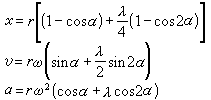1) hydration kinetics


水化动力学
1.
By measuring the concentration of Ca ̄(2+)in C_3S suspension at different negative temperatures,a regression for hydration kinetics at early stage is obtained,parameters from which(n=-1.
通过测定负温条件下掺NaNO_2的C_3S悬浮液中在5min内的Ca~(2+)浓度,回归出了C_3S早期水化动力学方程和水化动力学参数(n=-1。
2.
The compressive strength and hydration kinetics of the composite cement of silicate clinker and phosphoaluminate clinker prepared with the mass fraction of gypsum of 3.
5%(以SO3计,质量分数,下同)、磷铝酸盐水泥熟料掺量为10%的硅酸盐与磷铝酸盐复合水泥的力学性能和水化动力学,测定了该复合水泥在不同水化时间下的Ca2+和[SiO4]4-溶出浓度、相应的电导率及pH值。
2) hydration dynamics of cement


水泥水化动力学
1.
As a typical example of the application of system theory to the material science, the method of transfer function has been applied in this paper to convert the operational impedance from frequency domain to time domain by inverse Laplace transform in order to study the hydration dynamics of cement.
应用传递函数方法,通过Laplace逆变换将运算阻抗从频域转换成时域,以此求得水泥水化动力学曲线,结果与其它方法相符。
3) Hydrodynamic-hydrochemistry


水动力-水化学
4) hydrochemical dynamics


水化学动力学
1.
Based on the theories of chemical thermodynamics , hydrochemical dynamics and groundwater dynamics, using the method of chemical dynamics to calculate parameters, the ionic activity(α_ i ) and the saturation index(β_ j ) of minerals, then establish the mathematic relation of permeability coefficient(K)andα_ i 、β_ j , combine hydrogeologic condition to calculate K.
应用水化学动力学法求水文地质参数是将化学热力学、化学动力学与地下水动力学理论相结合,计算水中矿物的离子活度αi和饱和指数βj,建立渗透系数(K)与αi、βj之间的数学关系式,并结合水文地质条件,求渗透系数(K)。
2.
Application of hydrochemical dynamics to parameter analysis of seepage in karst fractured rock mass;
工程实践证明:用水化学动力学方法求解碳酸盐岩裂隙渗流参数是可行的,它具有一定的实用价值。
5) aquatic chemical kinetics


水体化学动力学
6) chemic and dynamical belts


水化学动力带
1.
The vertical distributions of the formation water chemic and dynamical belts have obvious zoning features.
渤海湾盆地廊固凹陷地层水纵向上特征复杂,地层水化学动力带的分布具有明显分带性。
补充资料:动力机械:内燃机动力学
研究内燃机运转中的力学现象的科学。其主要任务是研究分析内燃机运转时各主要零件的运动规律及其受力情况﹐用以作为内燃机零件设计﹑计算的依据。它还研究这些力对内燃机动力装置的影响及其消减方法。内燃机动力学的主要内容为曲柄连杆机构运动学﹑曲柄连杆机构动力学和内燃机平衡分析等。
曲柄连杆机构运动学 研究曲柄﹑连杆﹐尤其是活塞的运动规律。活塞作周期性往复运动时的位移 、速度
、速度 和加速度
和加速度 可用下述各式近似求算
可用下述各式近似求算

式中 为曲轴转角﹔
为曲轴转角﹔  为曲轴旋转角速度﹔
为曲轴旋转角速度﹔ 为曲柄半径﹔
为曲柄半径﹔ 为曲柄半径
为曲柄半径 与连杆长度
与连杆长度 之比﹐即
之比﹐即  =
=  /
/ 
曲柄作回转运动﹐连杆作复杂的平面运动。连杆的运动往往被简化分解为随活塞组的往复运动和随同曲柄的旋转运动。
曲柄连杆机构动力学 研究分析曲柄连杆机构(见曲柄滑块机构)在运动中力的生成﹑传递和输出。作用在曲柄连杆机构上的力有曲柄连杆机构运动时产生的往复惯性力和离心惯性力﹐以及内燃机气缸内的气体压力。
说明:补充资料仅用于学习参考,请勿用于其它任何用途。
参考词条